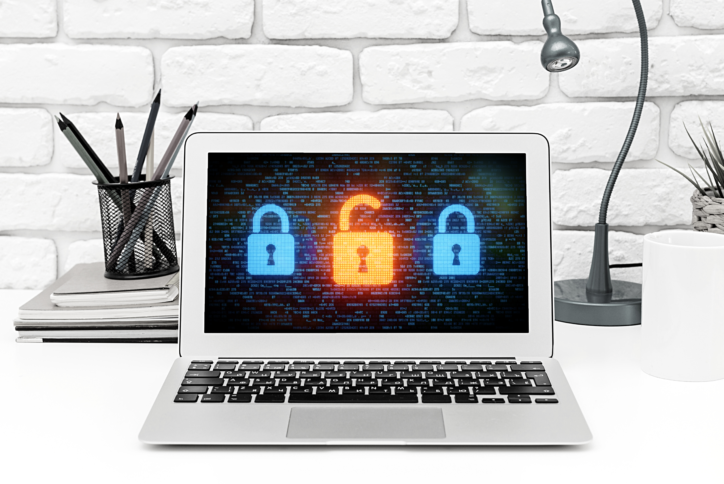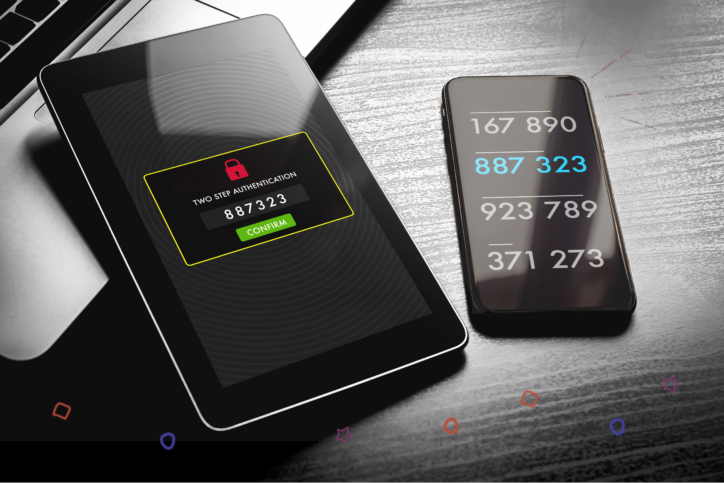Cybersecurity and data security are no longer luxuries — it is essential that any brand or business take measures to protect their data and information.
Cyber attacks and data breaches get more prevalent and sophisticated every day — and for brands and businesses, the consequences can be devastating: fines, fees, frustrations, and, perhaps most damaging, the loss of customer trust.
As of 2022, the global average cost per data breach has increased to $4.35 million. That’s per breach, per company.
Yet more alarming still, these dangers are no longer reserved for high-profile brands with millions of customers. In fact, small to mid-sized businesses are now especially vulnerable, specifically because they often lack proper cybersecurity.
However, every organization — regardless of size, type, or industry — is at risk. In response to this rising threat, digital marketing managers and brands must take action to protect sensitive data and confidential information that could be useful to a hacker. After all, even small businesses accumulate valuable data about customers, suppliers, company finances, or other important records that a cybercriminal could use.
We’ve discussed cybersecurity more generally on this blog before. However, it is worth diving deeper into one specific aspect of cybersecurity that is especially relevant for marketing managers and brands: Data.
To learn more about data security in particular and cybersecurity in general, some best practices to implement, and what it means for brands and marketers, continue reading below.
Data and Cybersecurity: Best Practices for Brands and Marketers

Is Data Security the Same as Cybersecurity?
The terms “data security” and “cybersecurity” are often used interchangeably in the media, by average computer users, and even by tech-savvy individuals in the IT industry!
Yet, while data security and cybersecurity are undeniably intertwined, these two terms do have different meanings and applications. Understanding the scope, function, and value of each term is key to creating and maintaining a secure network or computer system.
First, data security is a comparably narrow term referring specifically to protecting data or information. Safeguarding the confidentiality, integrity, and safety of the information stored on your systems from unauthorized access or modification fall under the category of data security.
On the other hand, cybersecurity, a much broader umbrella term, encapsulates data security as well as technologies, storage sources, communications, hardware, software, and more. It also includes the prevention and detection of and response to cyber threats, as well as the restoration of systems after an event.
For marketers and the brands that hire them, this is an important distinction. In order to perform their functions, agencies often require significant access to things like social media and email accounts, back-end website development or content management platforms, email accounts, Google Business Profiles, customer information, and more.
One of the first priorities any marketer should take into account — and an essential factor for brands to consider when hiring an agency — is whether they will take sufficient care with data security. When you share your social media login information with your digital marketing team, are you confident that information will be secure? Do team members maintain best practices? Who will be accessing your accounts? Will that access happen from machines that are also secure? And will those accesses be fully revoked when necessary?
Additionally, the General Data Protection Regulation (GDPR), a European data privacy regulation, contains significant requirements related to the handling and transfer of personal data within and from the European Union (EU) and European Economic Area (EEA). If your brand operates in Europe or internationally, you will need to make sure that every member of your organization and all outside parties with access are handling data appropriately, in accordance with GDPR provisions.

What Are The Key Principles of Cybersecurity?
The three basic pillars of any version of information security are what’s called the C.I.A. Triad (not to be confused with the Central Intelligence Agency):
- Confidentiality, or the practice of keeping private information private and accessible only to those who own it or require it to perform their functions.
- Integrity, or ensuring that the information is accurate and reliable and has not been tampered with or modified incorrectly or maliciously.
- Availability, or the system’s ability to keep the information accessible when and how it is needed by an authorized individual.
This model can be used to guide any information security endeavor from a high level. Regarding cybersecurity, there are several additional concepts to keep in mind. These can be grouped into four categories:
- Government, or identifying and managing potential risks.
- Protection, or taking steps to reduce those risks.
- Detection, or recognizing and understanding a cybersecurity incident within your systems.
- Response, or reacting, handling, and recovering from a cybersecurity incident.
Finally, in implementing these principles and concepts, there are three areas of control you should consider:
- Administrative, or guidelines, procedures, and policies to which your organization adheres to maximize security.
- Physical, or physical restrictions on access to sensitive information, such as locks, boxes, fences, key cards, and so on.
- Technical, or software tools that help protect your data from risks.
When it comes to social media management, all of these principles apply, especially when you realize how frequently social media accounts are hacked. Between the prevalence of social media-based scams and the amount of personal information users share on social media, this type of breach is common and on the rise.
Additionally, while the ability to work with team members from around the world certainly has advantages, it can also present security risks. For example, can you say for sure that everyone with access to your accounts has recently updated their security software?
These are all concerns brands should keep in mind when hiring agencies, and which all digital markets should prioritize when accessing any client data.

What Data Security Best Practices Should Brands Follow?
We have discussed four of the most important best practices on this blog previously. They are:
- Two-Factor Authentication, the practice of requiring an additional piece of information beyond a username and password, such as a secret question, biometric pattern, or PIN. This helps keep your accounts secure even if your passwords are compromised.
- Passwords and Encryption, including making sure your passwords are strong and encrypting information or converting it into a secret code that another computer can decrypt using a formula key.
- Up-to-Date Software, which often provides security patches to address new or emerging vulnerabilities.
- Employee Training, such as ensuring your team is well-informed about and attentive to data security and that a culture of security exists throughout your organization.
In addition to those four standards, there are further best practices that can help minimize your risk. For example, ensure you have devoted sufficient time and energy to researching and crafting your data security policies and that those policies are readily available and effectively communicated throughout your organization. Apply a risk-based approach to your thinking, and try to identify any and all possible weaknesses that you can.
Additionally, perform regular security checks and audits of all of your systems and databases to make sure that an unnoticed breach or new vulnerability has not occurred. Conduct patches of vulnerabilities regularly and ensure every action you take is well-documented.
You should also set up systems to control which individuals and systems have access to which information, and when. Limit access to sensitive data only to those individuals who need it to perform their functions, and don’t skimp on identity management and authentication processes. If an employee is departing your company, whether by choice or termination or even if a specific campaign has ended and you no longer require the services of an agency, it’s important to always fully revoke all accesses.
Even if you have no reason to think an individual or group having access would be a problem, the simple fact that being careless about who can enter your systems is not a good practice. What’s more, if that individual or group should experience a breach of their own, their access to your data could become an issue for you, as well.
Finally, make sure you have a strong recovery plan in place so that in the event of an incident, you can move swiftly to contain the damage and secure your systems.
Remember, whenever you grant someone access to your data, they become another potential entry point for a malicious actor. Furthermore, even the smallest business must keep company financial data and account login information secure. It’s also more than likely that your brand is responsible for protecting some customer data, as well. Even your newsletter email list or social media passwords could pose problems if they are compromised.
That’s why it’s so important to take data security and cybersecurity very seriously, both in the day-to-day operations of your business as well as in the process of hiring and working with digital marketing teams.

Would You Like Some More Help?
Proper data and cybersecurity can be complex, but they are absolutely essential for any business or brand. The consequences of a breach can be significant (60% of small businesses do not recover), and customer trust, once lost, can be very difficult to regain.
At Sociality Squared, we take data and cybersecurity very seriously and work to make sure all data associated with our clients is protected. To learn more about how we approach handling your data, reach out today.
Subscribe to our monthly S2xAccess newsletter:



